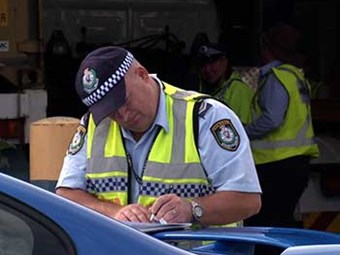NSW Authorities Uncover Improved Levels of Compliance during Austrans

NSW Police are seeing early signs of what it hopes is a positive trend. Image Source: FullyLoaded.com.au
While every time Operation Austrans rolls around we’re used to hearing about the shortcomings of the industry, this year NSW authorities have welcomed the boost in compliance.
The NSW Authorities cautiously welcomed the revelation that most of the industry is doing the right thing when it comes to compliance.
[Tweet “Operation Austrans – Most of the industry is doing the right thing when it comes to compliance.”]
According to NSW authorities Operation Austrans’ initial signs are promising and hopefully the start of a positive trend.
As we reach midway through Operation Austrans, NSW authorities are apparently pleased with their findings thus far.
By the end of the second week of the operation, The NSW Police traffic and highway patrol commander, Assistant John Hartley revealed compliance improvements after an action at a cold-storage distribution centre in western Sydney in which 89 trucks and trailers were inspected.
An article on Fullyloaded.com.au discussed how contrary to the norm, Roads and Maritimes Services was also focusing on the good results of Operation Austrans instead of focusing on contraventions alone.
Roads and Maritime Services director of safety and compliance Peter Wells explained:
“There are good initial signs of improved levels of compliance,”
“Some issues were identified around loading and roadworthiness, but the general level of compliance showed our message is getting through and responsible off-road parties in the logistic cold-storage sector have got the message; they have lifted their game and are more focused on their own compliance levels.”
Source: http://www.fullyloaded.com.au
According to reports so far during the operation only one major and nine minor defects were applied to 10 trucks for 36 issues affecting body chassis, ancillary equipment, wheels and tyres, steering, oil and fuel leaks, suspension and other matters.
Drug and alcohol tests have also proved promising. Officers have conducted 33 breath and drug tests on drivers, with no positive results.
During the operations 10 engine control module downloads have been conducted and only one truck has proven defective (the module could not give a proper reading).
Three outbound loads were also incepted by officers and redirected back to the dock for correction.
Mr Hartley went on to state:
“Given the importance and the frequency of cold storage and distribution, which goes all throughout NSW, correct load management is critical on our roads,” Hartley says.
“The challenge for industry is making sure those trucks and drivers that either drop off or collect goods are compliant and able to carry out that task.”
Source: http://www.fullyloaded.com.au
Despite the positive trend, there are still some concerns. Load restraint is one of the areas of concern, the operation revealed. Officers stopped a truck during their inspections carrying a shipping container with 24 tonnes of coiled steel cable that was unrestrained.
[Tweet “Operation Austrans: Load restraint is one of the areas of concern”]
In another incident officers conducted an Engine Control Module Download on a truck; it was allegedly found to have a maximum speed of 159.1km/h. The vehicle was also carrying a load that was over dimension.
Another offence detected was a driver found not to be carrying a work diary. She had also committed a critical fatigue offence, returned a positive result to a drug test and was also in possession of drugs and related paraphernalia.
Mr Wells went on to explain:
“We continue to be very clear with our message to boardroom directors, distribution-centre managers, and all sectors of the logistics supply chain – parties that forward or receive goods must take charge of their responsibilities and ensure trucks are safely loaded and properly restrained,” Wells says.
“This is critical for the safety of your own staff and anyone using our roads.
Read more at: http://www.fullyloaded.com.au
Mr Wells concluded by explaining that issues such as fatigued driving, speeding and drug use must be eliminated if we are to minimise the risks to other road users.


